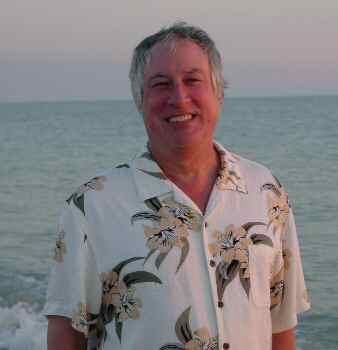| RESUME – RICHARD CHARLES DAVIDS | |
1986 – February 2005
|
 |
| Program Engineering Lead for Targets Countermeasures Program. Responsible for integrating Specialty Engineering into system design, build, and test; including parts, materials and processes, human factors engineering, survivability, electromagnetic effects (EMI/EMC), maintainability, reliability, testability, PHS&T, manufacturing. | |
| Coordinated Specialty Engineering (SPE) technical and business inputs for Airborne Laser 2008, Kinetic Energy Interceptor, LADAR, and CEKV proposals. Ensured that SPE functions integrated into SOW, WBS, system and product specifications, IMP/IMS, CDRL, and other requirement documents. | |
| Provided Human Factors Engineering (HFE) program plans and technical input for Ground Based Interceptor, Booster Vehicle +, FBM Low Cost Test Missile Kit, MultiUser Objective System, and Space Based Infrared Satellite programs and proposals. | |
| Primary technical writer and publisher for HFE practice and selected SPE guidebooks (materials and processes, parts). Developed program self-assessment tools for SPE disciplines. Coordinated SPE inputs and schedules for SPE Program Engineering Lead (PEL) training program. Wrote two segments (PEL Basics and HFE).
|
|
| Provided SPE overview to Certified Principal Engineer (CPE) and Test Engineering Development (TED) training course. Co-developed System Engineering (SET) CONOPS training course and materials. Provided system safety training materials for PHS&T course. |
|
| Project manager for $50K ‘lessons learned’ web site. Chief architect, UI designer, and test engineer. Developed program plan, functional and task analysis, web-based prototype, and usability analysis. Subcontracted effort via IWTA with LM Owego software center.
|
|
| Developed architecture and HTML-code for web-based Test Engineering Requirements database based on MIL-STD-1540.
|
|
| |
|
| Designed and published User Guides and Installation and Checkout Guides for Iridium Software Test System and MILSTAR Mission Planning Segments.
|
|
| Designed, populated, and maintained on-line System Guide for SBC Interactive TV program. Included billing, network management, equipment setup, operation, troubleshooting. Designed and coded Network Security Management user interface. Developed training plan for head-end personnel. | |
| |
|
| Developed first CAD Operational Sequence Diagrams for large solar array manufacturing operations. Coordinated inputs from tooling, design, and manufacturing personnel to improve manufacturing process and procedures | |
| Developed system and detail design requirements, plus hardware and facility layouts for OSD Crisis Coordination Center, Space Station, DOT (BART), Air Force, and Army (GBI) proposals and programs. | |
| Created the first LM standard for human computer modeling programs. CAD models used to design ergonomic workspaces and evaluate bio-mechanical stress, safety hazards, hardware accessibility and maintainability, environmental factors (noise, line of sight, illumination). | |
| Lead Engineer and acting supervisor for 5 human factor engineers in FBM Systems Engineering department. Provided HFE technical liaison to Trident II Program Office, Management, and Navy. | |
| Directed soft and hard mockup exercises and noise testing to validate Trident II missile maintenance tasks onboard submarines and during field level operations. | |
| Designed and prototyped user interface for hand-held UK BIT/BITE equipment. | |
| Designed, tested, and implemented a family of OSHA-compliant high visibility warning signs for high value hardware. Coordinated publication, marketing, and distribution to manufacturing areas. | |
| Prime Human Factors Engineer on RPV (Army), FBM (Navy), Air Force, and several classified programs. |
|
January 1984 to April 1986Human Factors SpecialistMissile Systems Division, LMSC |
|
September 1979 - December 1983Senior Human Factors EngineerMissile Systems Division, LMSC |
|
September 1976 to August 1979Human Factors EngineerMissile Systems Division, LMSC |
|
HONORS AND AWARDS. |
|
EDUCATION
1971–1974 New Mexico State University - MA, Engineering Psychology
|
|
RELATED INFORMATIONDesigned, developed, and maintain 3 professional web sites:http://www.deepsloweasy.com http://www.laketeedyuskung.com Certified Professional Human Factors Engineer. |
|
SECURITY CLEARANCESDOD TOP SECRET |
|